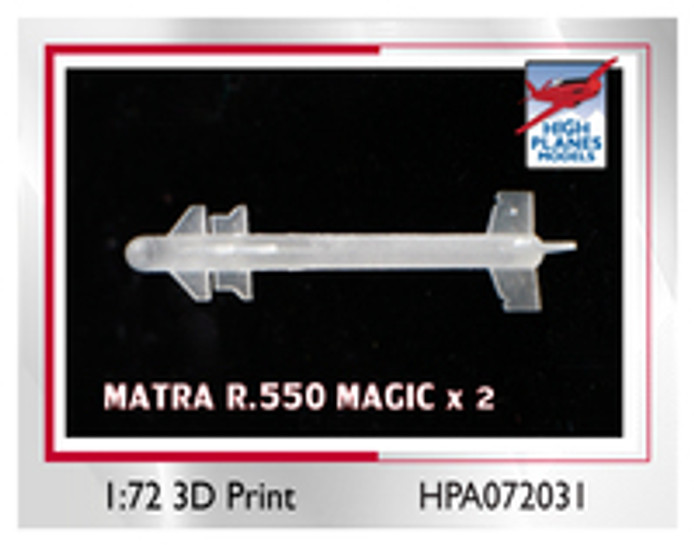We have been using 3D printing for some time to help with new product development and for mastering resin parts. Recently we started offering 3D printed missiles for sale. The advantage of this manufacturing method is that it is not necessary to assemble fine details - they can be printed right in place. The first missile was the Matra R.550 Magic, and we will follow this with the Israeli Shafrir II and the French Matra R.530K.

How to use 3D printed parts
Using 3D printed parts is different from standard polystyrene plastic or polyurethane resin. When the parts are printed, they are supported by a wax structure. The wax residue needs to be removed before use.
Before packaging the parts we clean them ultrasonically in a solvent and inspect them for visual defects. The cleaning should remove the wax, but there is a chance some remains. We therefore recommend cleaning them before you use them. Isopropyl aolcohol (rubbing alcohol or isonol) is usually good.
The parts will have fine strata lines from the print process. These can be reduced by spraying with Mr Surfacer 100 or 1200 and gentle sanding. For some reason other spray primers don't work as well.
How are 3D parts made?
The development process for 3D parts is quite straight forward. We draw the part in a 3D CAD program, then convert it to a "mesh" that describes the surface. This mesh must not have any holes in it and there are minimum thicknesses or there will be printing problems.
The minimum thickness for the printers we use is about 0.3 mm. Certain details can be smaller but we have found that these can be damaged in the clean up process.
Our parts are printed in UV cured acrylic on a 3D Systems ProJet 3500 printer. These printers are significantly more capable - and more expensive - than the hobbyist or home printers.
Why do we sell some parts in resin and some 3D printed?
Polyurethane resin is an affordable way to replicate complex shapes with undercut areas. These cannot often be done by injection moulding because the moulding machine needs to be able to eject the part. However, PU resin parts can be difficult to mould without leaving seams or breaking the part down into a number of sub-assemblies.
3D printing allows undercuts and removes the need for a mould. This is very suitable for fine, complex parts. The down side is that set up costs and unit production costs are much higher than PU resin.
We have seen cost of printing decrease and the capability of the printers improve significantly in the last five years. This trend will definitely continue.
 Australian Dollars
Australian Dollars
 Euro
Euro
 British Pound
British Pound
 US Dollar
US Dollar
 Singapore Dollar
Singapore Dollar

